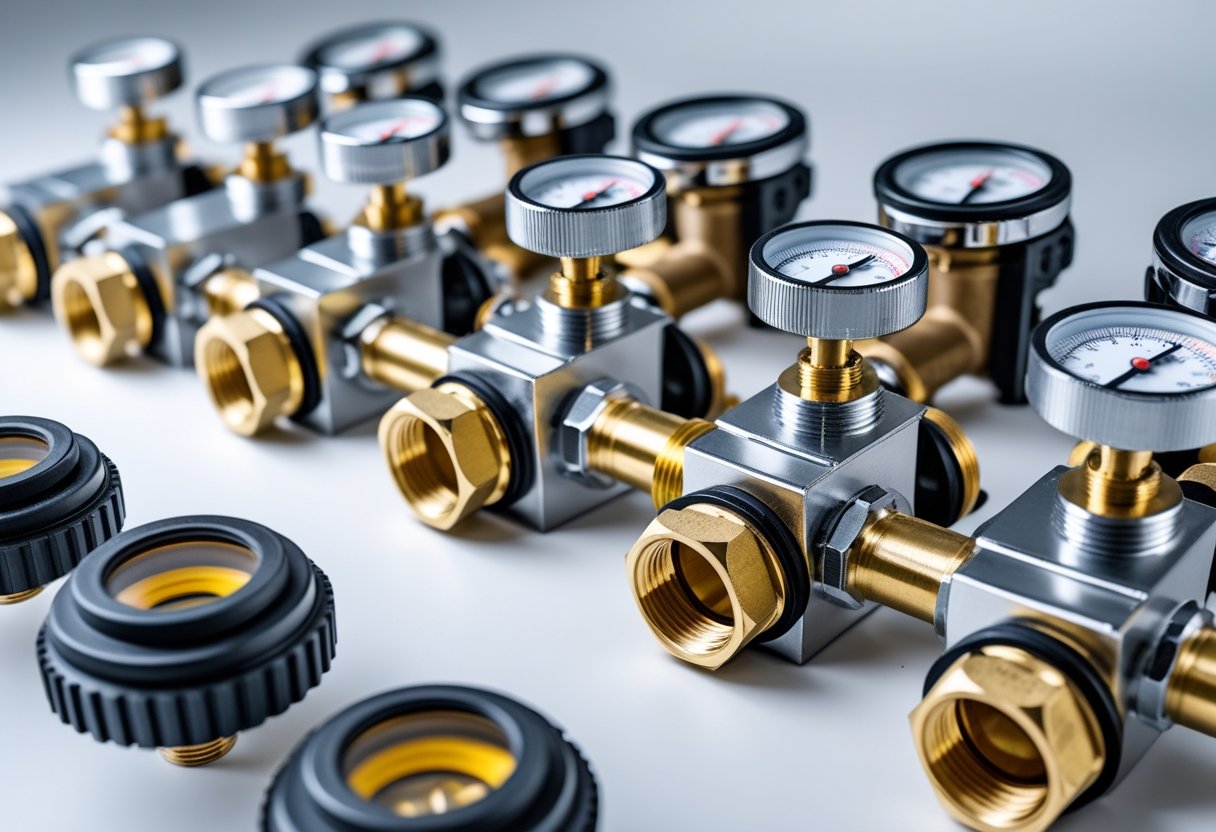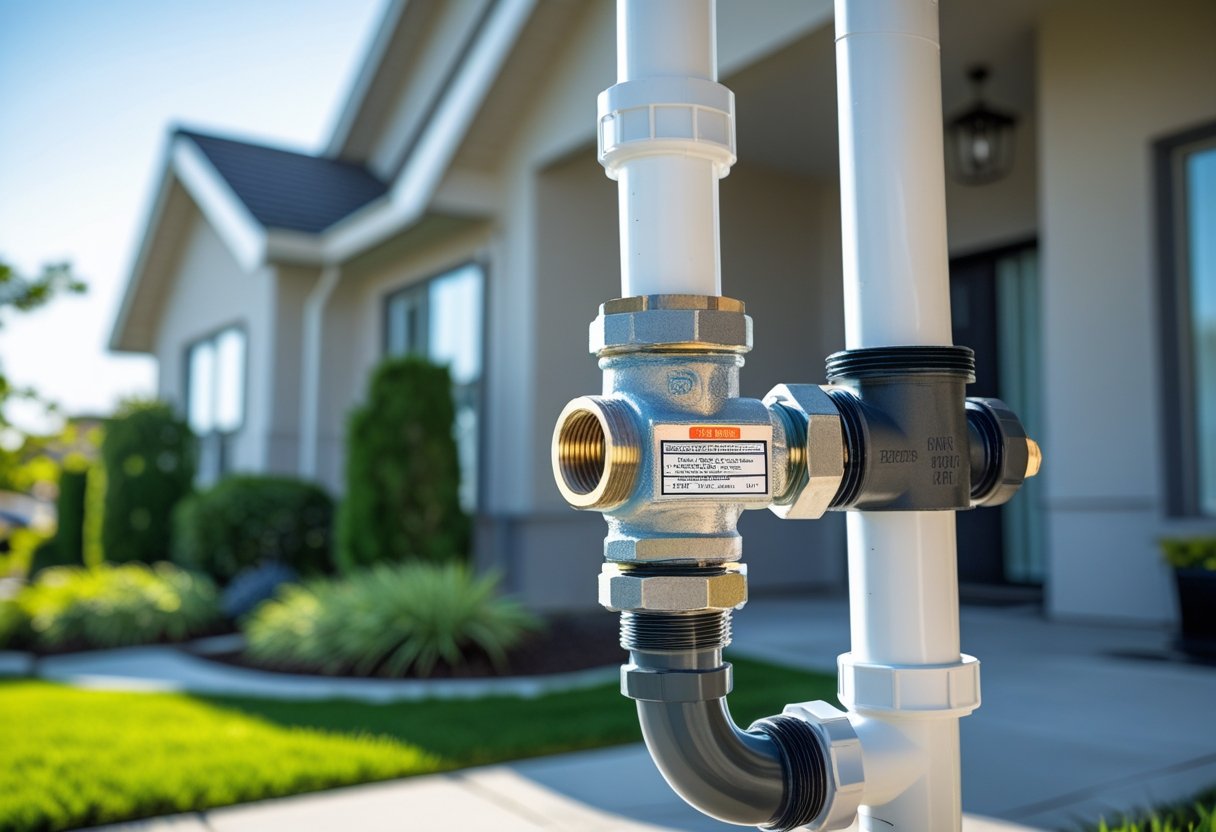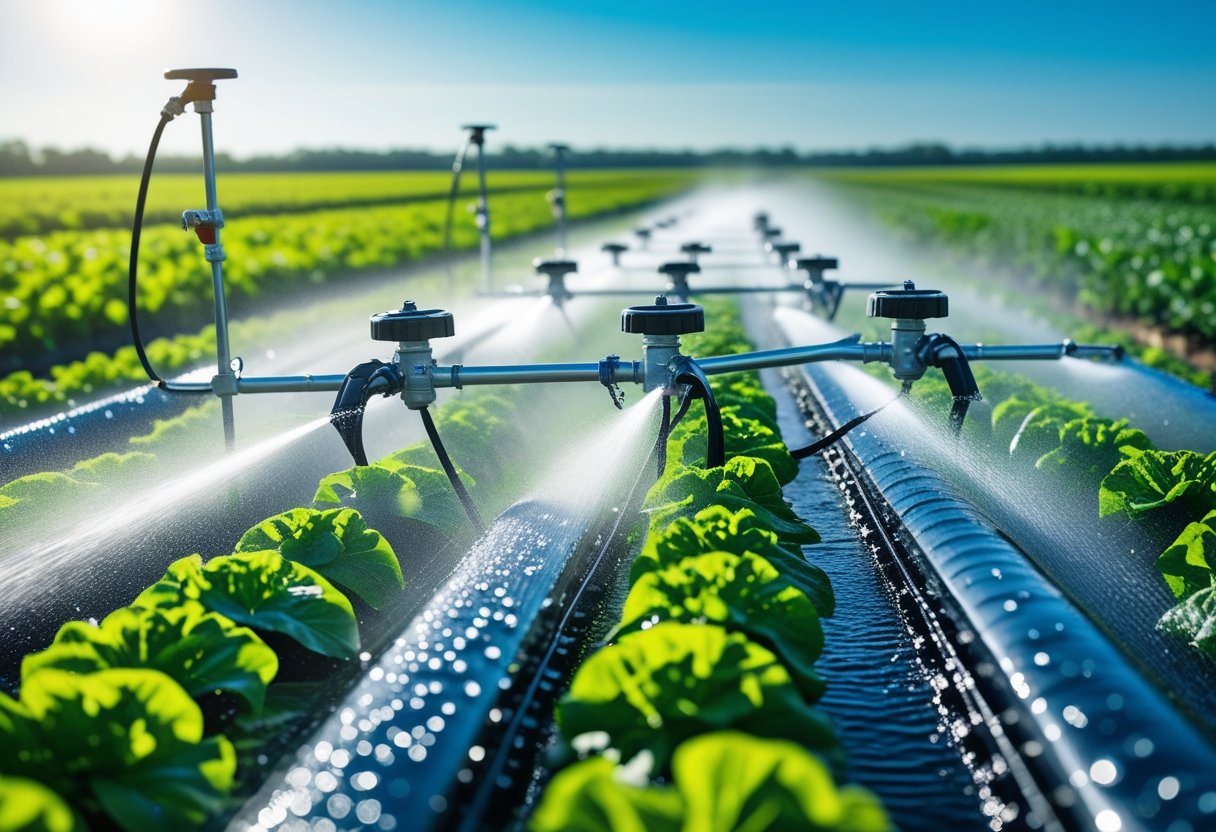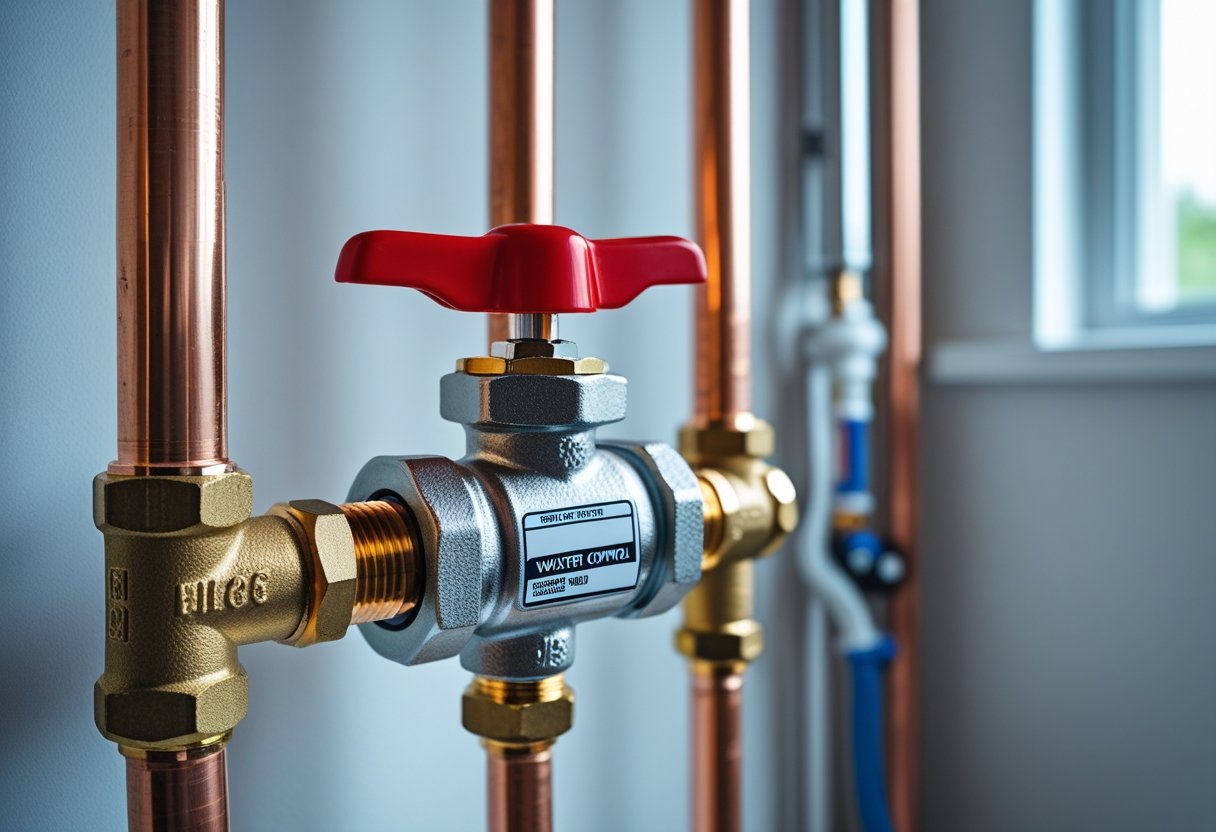If you want to protect your water supply from contamination, understanding Reduced Pressure Zone (RPZ) backflow assemblies is key. These devices use two check valves and a pressure relief valve to stop dirty water from flowing back into your clean water system. That’s why they’re among the safest and most reliable backflow preventers, especially for high-risk areas.
RPZ assemblies create a lower-pressure zone that forces any contaminated water out before it can reach your drinking water. This design offers a higher level of protection than other backflow devices. Whether you have irrigation, a commercial property, or just want to follow local safety rules, knowing how RPZs work goes a long way toward keeping your water safe.
At Pacific Backflow, we serve all of San Diego County and make sure your backflow preventer gets proper testing and maintenance. With more than 40 years of experience, our friendly team helps you stay compliant and do your part to protect the community’s water.
What Is a Reduced Pressure Zone Backflow Assembly?
A Reduced Pressure Zone (RPZ) backflow assembly is a special device that stops dirty water from flowing backward into your clean water supply. It’s designed to protect your drinking water from contamination, especially in places where the risk is high.
Purpose and Function
The main job of an RPZ assembly is to keep your water safe. It blocks water that could have chemicals, dirt, or germs from sneaking back into your home’s water system. Backflow can happen if water pressure drops or reverses in the pipes, so an RPZ is your safety net.
You count on clean water every day. An RPZ gives you peace of mind by blocking harmful water from mixing with what comes out of your tap. You’ll find them in homes, businesses, and anywhere water safety really matters—like irrigation or fire protection systems.
Key Components
An RPZ backflow assembly has three main parts:
- Two check valves: They let water move forward but snap shut if it tries to reverse.
- Pressure relief valve: This opens up to release water if the pressure gets too high, stopping possible backflow.
- Reduced pressure zone: The space between the two check valves where the pressure stays lower.
These parts together form a solid barrier against contamination. The relief valve also steps in if the system pressure gets unsafe, draining water out instead of letting it back up.
How It Prevents Backflow
The RPZ assembly keeps an eye on pressure to make sure water only moves toward your taps. If the supply line’s pressure drops, or if there’s a push from the other side, the check valves slam shut.
And if there’s even a hint that dirty water could sneak back, the relief valve pops open and lets the water drain out. That way, nothing contaminated can get back into your clean water.
This setup is why cities and water districts often require RPZ devices at locations with higher contamination risks.
If you need backflow testing or installation, Pacific Backflow covers San Diego County with reliable service. Their techs make sure your RPZ device works right and meets all safety standards.
How Reduced Pressure Zone Assemblies Work
Reduced Pressure Zone (RPZ) assemblies use a combo of valves and pressure zones to keep contaminated water out of your clean supply. They depend on a low-pressure zone and control water flow with check valves and a relief valve. This setup is especially important where health risks are higher.
Pressure Zones Explained
An RPZ creates three pressure zones: the supply side, the reduced pressure zone, and the downstream side. The reduced pressure zone sits between two check valves and always has lower pressure than the supply.
Because this middle zone stays at lower pressure, water can’t easily flow backward. The relief valve keeps an eye on pressure here. If it rises too close to the supply pressure, the valve opens and releases water to keep things safe.
This is really what keeps your water system protected from backflow.
Operation During Normal Conditions
Under normal conditions, water moves forward through the RPZ assembly. The first check valve opens, letting water into the reduced pressure zone. The relief valve stays closed since the zone’s pressure is lower than the supply.
Then the second check valve opens, sending water downstream to your faucets or appliances. Both check valves team up to make sure water only goes one way, preventing backflow.
The pressure difference keeps the relief valve shut, so no water leaks out.
Operation During Backflow Events
If backflow starts to happen, pressure in the reduced pressure zone climbs toward the supply pressure. When it gets too high, the relief valve opens automatically and dumps water outside through a drain instead of letting it flow back into your clean supply.
Both check valves work to stop dirty water from going backward. If one fails or leaks, the relief valve still steps in and protects you by releasing water.
That triple protection—two checks and a relief valve—makes RPZ assemblies a solid pick for high-risk spots where water safety is a must.
Pacific Backflow helps San Diego County customers protect their water with expert backflow testing, repairs, and installations to keep systems safe and up to code.
Applications and Uses
Reduced Pressure Zone (RPZ) backflow assemblies play a big role in keeping water supplies safe from contamination. They’re built for places where you need serious protection against dirty water sneaking back into clean lines. You’ll see these devices in businesses, homes, and big industrial setups.
Commercial Installations
If you run a business, chances are you need an RPZ backflow assembly to keep your water safe. Commercial buildings—think offices, restaurants, shopping centers—use these devices to block chemicals or waste from entering the water supply.
Most cities require these devices in commercial spaces because the risk is higher. Your RPZ uses two check valves and a relief valve to stop backflow and keep things reliable.
Hospitals and schools, where health hazards are serious, almost always use RPZ assemblies. Regular installation and testing help your building meet local codes and keep everyone safe.
Residential Usage
Most homes don’t need RPZ assemblies, but sometimes they’re required—like if you have irrigation systems or wells. Sprinklers or pumps that connect to your water supply can push dirty water back, so an RPZ is a good idea.
If your home’s water mixes with chemicals (like fertilizers), an RPZ helps keep your drinking water clean by holding back anything unwanted.
Some homeowners just like the peace of mind, even if it’s not required. Annual testing and pro installation make sure your system does its job and keeps your family safe.
Industrial and Municipal Systems
Industries and city water systems face bigger contamination risks than homes or small businesses. Chemical plants, factories, and public water suppliers rely on RPZ backflow devices to prevent dangerous water mix-ups.
Cities often require these at water meters for irrigation, fire protection systems, and other risky spots. The RPZ’s design—two check valves and a relief valve—offers strong defense, even in complex systems.
If you’re in charge of one of these, professional installation and maintenance from experienced techs (like Pacific Backflow in San Diego County) keep your water safe. Taking care of your RPZ assembly helps you dodge expensive repairs and contamination headaches.
Installation Guidelines
Getting a Reduced Pressure Zone (RPZ) backflow assembly installed correctly is crucial for keeping your water safe. You’ve got to pick the right spot, follow some smart placement tips, and trust pros to make sure it meets the rules and works right.
Location Requirements
Your RPZ device should go above ground in a place that’s easy to reach for testing and maintenance. Protect it from freezing and flooding—so, skip the basement or anywhere water collects.
Check your local codes for minimum clearance. Usually, you’ll need at least 12 inches around the device. It should be after the water meter but before any branch lines.
Make sure the relief valve’s discharge won’t cause damage or create hazards. You’ll want a drain or a safe drainage spot nearby.
Best Practices for Placement
Put your RPZ assembly where you can easily get to it for service or checks. Avoid tight corners or places where it’s tough to reach. Good lighting helps, especially if testing happens in dim areas.
Mount the device vertically on a sturdy wall or bracket to keep it steady. Use supports that cut down on pipe vibration or stress.
Label the device clearly so anyone working on your system knows what’s what. If theft or damage is a concern, consider a protective cage.
Professional Installation Tips
Always hire certified plumbers or backflow pros like Pacific Backflow for your RPZ install. They know the local rules and exactly how to set things up for your property.
A pro will check your water pressure first since the RPZ needs a certain pressure difference to work right. They’ll also do initial testing after setup to be sure everything’s safe.
Getting it installed properly saves you money on repairs down the line and keeps you in good standing with city water authorities. When your system’s set up right, annual testing is a breeze.
Maintenance and Testing of RPZ Assemblies
Keeping your RPZ assembly in good shape takes regular checks, proper testing, and quick fixes when problems pop up. Knowing how to inspect the device, use test kits, and handle common issues helps protect your water supply and keeps the system ready when you need it.
Routine Inspection Procedures
Check your RPZ assembly often. Look for leaks around the valves and pipes. Watch for dirt, debris, or damage that might mess with how it works. The relief valve shouldn’t drip unless the system pressure is too high.
Inspect the housing for cracks or wear. Clear away anything that could block the valves. Pay close attention to shut-off valves—they let you isolate the RPZ for testing and repairs.
If you spot rusty pipes, water pooling, or physical damage, call a certified pro. Even small issues can keep the assembly from doing its job.
Test Kit Usage
Testing your RPZ assembly takes special test kits. These tools measure pressure at different points to check if the valves and relief valve are doing their thing. You hook the test kit up to test cocks on the RPZ.
Start by shutting off water to isolate the device. Then use the kit’s gauges to get pressure readings. Compare those to the manufacturer’s specs or local rules. If the pressure isn’t right, the device might not pass.
Only trained, certified techs should handle this testing. Doing it wrong can miss problems or even break the device. Pacific Backflow offers quick, reliable testing to keep your RPZ compliant and safe.
Common Maintenance Issues
Most RPZ problems? Stuck or leaking relief valves and failing check valves, hands down. Relief valves get jammed by debris or start corroding from constant pressure. Check valves just plain wear out, letting water sneak backward.
Another pain: missing or busted test ports. That makes yearly testing a hassle. And sediment—don’t get me started—can slow down valve movement and drag down performance.
Regular cleaning and professional service usually clear things up. If you need repairs, you want someone who knows the local water district codes inside out. Pacific Backflow can swap parts or fix things up so your system stays protected.
Troubleshooting Common Problems
Backflow assemblies act up sometimes, messing with your water supply’s safety. If you know how to spot leaks, pressure drops, and valve issues, you’ll catch problems before they get ugly.
Leak Detection
Leaks are classic trouble signs for reduced pressure zone backflow assemblies. You might see water dripping around the device or notice wet spots by the valves. Usually, leaks happen because debris is stuck in the valve, seals are shot, or fittings are loose.
Look for visible water and listen for hissing—yep, even a little hiss can mean a small leak. If your assembly leaks, you’re wasting water and possibly letting contaminated water into your clean supply.
Fixing leaks? Sometimes it’s as simple as cleaning out debris, swapping an O-ring, or tightening things up. If you’re scratching your head, it’s probably time to call a specialist to avoid bigger headaches and keep your system safe.
Loss of Pressure
If your water pressure drops or your taps slow down, the backflow preventer could be the culprit. Worn parts or a clog inside the device can do that.
Low pressure usually means the valves aren’t opening all the way. Buildup inside can also choke the flow. That’s not just annoying—it can mess with your plumbing and waste water.
To fix it, check and clean the valves or replace any worn parts. Regular testing and maintenance go a long way. The folks at Pacific Backflow can make sure your assembly keeps the right pressure and your water stays safe.
Valve Malfunction
Valve problems can knock your backflow assembly out of commission. Broken springs, damaged check valves, or sticky valves that won’t open or close—these are all trouble.
If valves stop working, contaminated water could mix with your clean supply. You might hear odd noises or notice weird water flow.
Usually, fixing valve issues means replacing parts or getting a pro to repair it. Regular inspections catch problems early. If your valves are acting up, don’t wait—quick repairs keep your system up to code and your water safe.
Regulations and Compliance Standards
To keep your Reduced Pressure Zone (RPZ) backflow assembly running right and up to code, you’ve got to follow local rules, get proper certification, and keep clear records. It’s not just about safety—it’s about avoiding fines too.
Local Codes
Local codes spell out the rules for installing and testing RPZ assemblies. These can change from city to city or water district to water district, so you’ll need to check what applies to you. Most places want annual testing and only allow approved devices.
A licensed plumber should install your RPZ. If you cut corners, you could end up with pressure issues or a failed device. Codes change, too—sometimes they get stricter, aiming for better water safety.
Certification Requirements
Certified testers have to handle your RPZ testing—it’s the only way to make sure things are done right. They need to pass training and exams recognized by the state or your local authority.
When you hire certified pros, you know they’re using the right tools and following the right steps. Pacific Backflow’s team keeps things quick and reliable, so your RPZ passes with zero hassle.
Reporting and Documentation
After testing, you’ve got to submit official reports to your water authority—no skipping this. Good documentation proves you’re compliant and keeps you out of trouble.
Pacific Backflow handles the paperwork for you and keeps detailed records. Still, you should hang onto copies of everything in case you get inspected or there’s a dispute. Paperwork’s just as important as the test itself to prove your RPZ is safe and legal.
Benefits of Using Reduced Pressure Zone Assemblies
Reduced Pressure Zone (RPZ) assemblies? They’re the gold standard for water protection. They keep your water safe, maintain quality, and handle complicated setups without fuss. That kind of reliability is what you want if you’re serious about avoiding contamination.
Health and Safety Advantages
RPZ assemblies block contaminants from sneaking back into your clean water. They use two check valves and a relief valve in the middle. If one check valve fails, the relief valve dumps water out, stopping dangerous backflow.
Hospitals, restaurants, factories—places with real health risks—count on RPZs. This extra layer of safety helps prevent waterborne diseases and protects your family or customers.
Water Quality Protection
RPZs keep your water pure by creating a reduced pressure zone between the check valves. If pressure spikes, contaminated water can’t get back into the clean supply.
They discharge water automatically if needed, so you don’t have to babysit the system. If you’ve got irrigation or fire protection systems tied to your main supply, RPZs help you meet water quality standards and local regulations.
Reliability in Complex Systems
RPZ assemblies work in both homes and businesses, even if your plumbing is a maze. Their design handles both backpressure and back-siphonage—common headaches in multi-use water systems.
Two independent check valves mean that if one goes, the other keeps things safe. That’s fewer repairs and less downtime. If you want expert backflow testing or installation in San Diego County, Pacific Backflow gets the job done fast and keeps your assemblies compliant.
Choosing the Right RPZ Assembly
Picking the right Reduced Pressure Zone (RPZ) assembly? It depends on how you use your water, the size of your plumbing, and which brands you trust. Every choice impacts safety, efficiency, and whether you’re following the rules.
Factors to Consider
Start by thinking about your water hazard level. RPZ assemblies are for high-risk spots where contaminants could get into your water. Local codes might require RPZs for certain setups—like irrigation or fire systems—so check what applies.
Quality matters. Go for devices made from tough stuff like bronze or brass—they stand up to corrosion. And make sure your RPZ is easy to access for testing and maintenance; it’ll save you headaches down the line.
Also, installation location matters. The RPZ should be easy to reach for inspections but out of harm’s way from freezing or flooding. Good placement just makes life easier.
Sizing and Capacity
Your RPZ needs to match your water flow. Too small, and you lose pressure. Too big, and you waste money and water. Figure out your peak flow rate—think about everything running at once.
Check the pressure ratings, too. Most RPZs handle up to 175 psi, but make sure that matches your local supply so you don’t wreck the device.
A good installer or certified tester can help you size things right. If you get it wrong, your RPZ won’t protect your water—or your plumbing—like it should.
Brand Comparisons
Not every RPZ assembly is created equal. Look for brands that meet or beat industry standards and back up their products with solid warranties.
Pacific Backflow has reliable RPZ assemblies and a team with decades of know-how. They’ll help you pick the right model, install it, and test it—no fuss.
Ask about parts availability and support. Good customer service makes maintenance way easier. Don’t be shy about checking reviews or getting recommendations; it’s worth finding brands that actually deliver.
Frequently Asked Questions
When you understand the parts, functions, and requirements of a Reduced Pressure Zone (RPZ) backflow assembly, you’re in a better spot to protect your water. Knowing when to install one, how it works compared to other valves, and how to care for it keeps your system safe—and you out of trouble.
What is the primary function of a reduced pressure zone backflow assembly?
An RPZ assembly’s main job is to stop contaminated water from flowing backward into your clean water. It keeps your drinking water safe by blocking harmful stuff from getting into the pipes when water reverses direction.
How does a reduced pressure zone assembly differ from a double check valve?
An RPZ has two check valves plus a pressure relief valve. That relief valve opens up if pressure gets too high, adding another layer of safety. A double check valve just has the two check valves—no relief valve—so it’s not as protective.
What are the typical maintenance requirements for an RPZ backflow preventer?
You should get your RPZ tested every year to make sure it’s working. If you find leaks or other problems, fix them fast. Regular cleaning and inspections keep it reliable.
Can you outline the main components of a reduced pressure principle backflow prevention assembly?
An RPZ has two check valves, a pressure relief valve in the middle, and shutoff valves at both ends. All these parts work together to reduce pressure and stop backflow from contaminating your water.
What situations typically require the installation of an RPZ valve?
You’ll need RPZ valves where water contamination risks are high—think irrigation systems, commercial buildings, and industrial sites. Local codes usually require them anywhere there are chemical or health hazards.
How do I determine the appropriate size and model of RPZ backflow preventer for my needs?
Figuring out the right size usually comes down to your water flow rate and what kind of system you’re working with. Honestly, it’s best to have a plumber or backflow specialist take a look—they’ll know how to match you with an RPZ that fits local code and actually protects your water supply.
If you’re in San Diego County and need backflow testing or service, Pacific Backflow is a solid choice. Their team handles testing, repairs, and installations, and they actually get things done quickly to keep your water safe.











